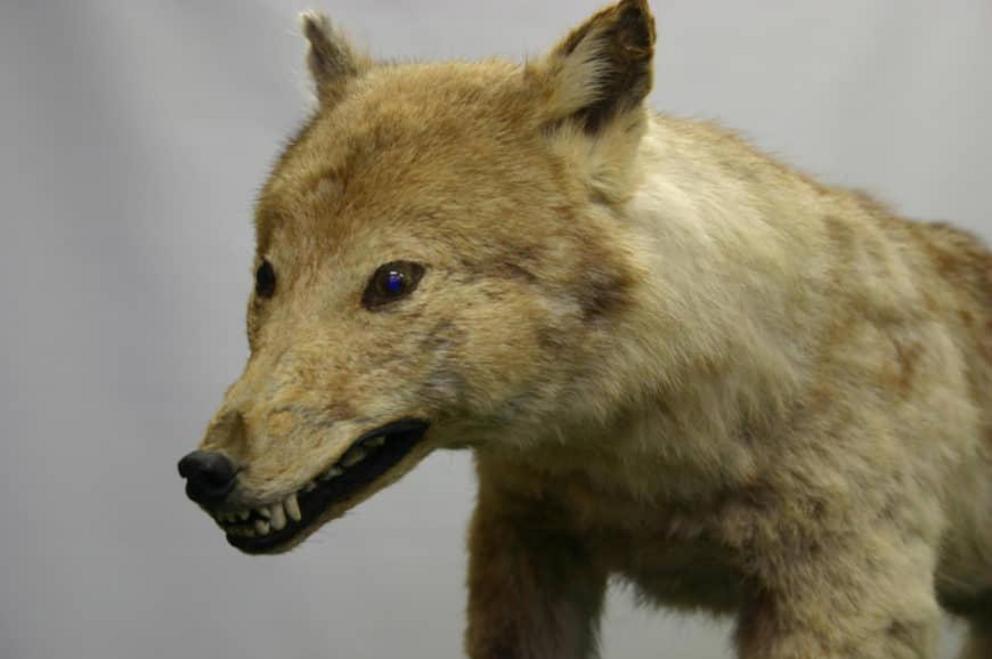Debate over Japan's extinct wolf grows
An unidentified animal howl recorded in the Okuchichibu mountains bears a strong resemblance to a wolf howl, according to an analysis of audio samples provided by Hiroshi Yagi, an independent researcher who has been working to prove the existence of the officially extinct Japanese wolf.
The howl was caught in a video clip from one of the 70 or so motion-sensitive infrared cameras Yagi and his nonprofit organization have set up in a mountainous area bordering Tokyo and Saitama, Yamanashi and Gunma prefectures. The footage, captured on the morning of Oct. 21 last year and retrieved the following month, shows three deer running toward the camera, followed by a howl.
Yagi, 69, provided the recording of the howl alongside four other audio samples of wolf, dog and deer cries to the Japan Acoustic Lab based in Shibuya Ward, Tokyo, for analysis and comparison.
In the resulting report dated April 25 that was reviewed by The Japan Times, the research facility concluded that the fundamental frequency of the mysterious howl was approximately 470 hertz, nearly identical to the fundamental frequency of a howl of a timber wolf recorded at Asahiyama Zoo, Hokkaido, that registered at approximately 465 hertz. The fundamental frequency, or simply the fundamental, is the harmonic component of a complex wave that has the lowest frequency and commonly the greatest amplitude.
In contrast, the fundamental frequencies of the howl of a Shikoku, a Japanese dog breed, were approximately 380 hertz and 410 hertz, while those of a male deer were approximately 2,200 hertz and 1,890 hertz.
“In general, the fundamental frequency of vocal folds differs depending on the species and size of the individual,” the report said.
“It is highly conceivable that cries with similar fundamental frequencies of vocal folds belong to individuals of the same species and of similar size,” it said, adding that there was a very strong chance that Yagi’s animal howl and the howl recorded at Asahiyama Zoo belonged to animals of the same species.
Yagi, who has spent decades searching for the Japanese wolf, an animal that is considered to have gone extinct over a century ago, said the results backed up his own assessment.
“I never doubted that it was a wolf since I reviewed the footage after retrieving the SD memory card from the camera last November,” he said.
Yagi’s findings are expected to be aired as part of a segment on the Japanese wolf being produced for TV Asahi’s Sunday Station news program, and could rekindle a debate on whether the extinct animal could still be roaming the mountains and forests of Japan.
The last known specimen of the Japanese wolf, also known as the Honshu wolf, was acquired in 1905 by American zoologist and explorer Malcolm Playfair Anderson in Washikaguchi, a remote logging village in Nara Prefecture. On Jan. 23 that year, three hunters brought the carcass of a wolf to Anderson, who bought the dead animal and sent its skull and pelt to the British Museum of Natural History in London, where it is still preserved.
Yagi attracted the nation’s attention when he shot 19 photos of a wolf-like canine in the mountains of Chichibu, Saitama Prefecture, on Oct. 14, 1996.
Renowned zoologist Yoshinori Imaizumi said at the time that the animal resembled the Japanese wolf type specimen, or a specimen originally used to name a species or subspecies, acquired by German physician and botanist Philipp Franz von Siebold in the 1800s and now preserved in the Naturalis Biodiversity Center in Leiden, Netherlands.
Other academics, however, have voiced doubts over the continued existence of the officially extinct animal, suggesting that reported wolf sightings were likely those of wild or stray dogs.
Once endemic to the islands of Honshu, Shikoku and Kyushu, Japanese wolves were historically worshipped as deities offering farmers protection against crop raiders such as wild boar and deer. But since the Edo Period (1603-1868) and onward, they were gradually hunted down by humans in the name of protecting livestock. Coupled with the epidemic of contagious diseases such as rabies and canine distemper, the Japanese wolf is thought to have been exterminated by the early 20th century.
Despite its official status, there have been numerous accounts of sightings, reports of howling and discoveries of purported wolf droppings, bones and fur that have led some, including Yagi, to argue that the Japanese wolf may still be alive.
Interest in the animal has been rekindled as of late, with national broadcaster NHK running a one-hour program on Sept. 12 featuring the Japanese wolf.

